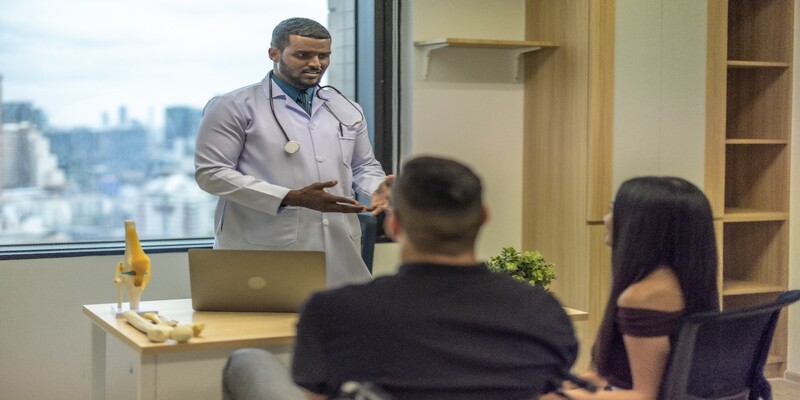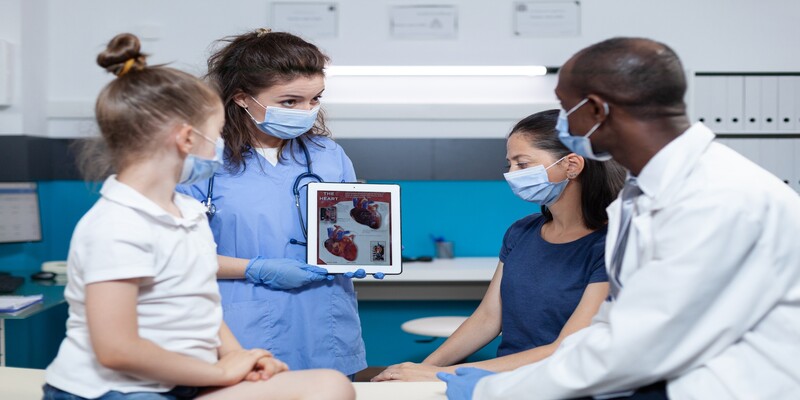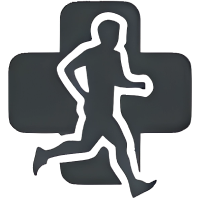Creating an effective patient education program empowers individuals to take control of their health and well-being. In an increasingly patient-centred healthcare landscape, providing transparent, accessible, and engaging educational resources can significantly improve patient outcomes and satisfaction.
This blog will guide you through the most effective health education strategies and Patient education program tips so that your patients are confident in their healthcare decisions and actively involved in their care journey.

Understanding The Needs Of Your Patient Population
One of the most effective health education strategies for implementing a patient education program is to understand the specific needs of your patient population.
Conducting Needs Assessments To Identify Educational Gaps
This process involves gathering data from various sources to pinpoint gaps in knowledge and understanding. Key methods include:
Patient Surveys: Use questionnaires or interviews to directly ask patients about their understanding, areas of confusion, and topics they wish to learn more about.
Focus Groups: Facilitate discussions with groups of patients to gain deeper insights into their educational needs and preferences.
Health Outcome Data: Analyze clinical data to identify common issues or misconceptions that may indicate areas where patient education could improve outcomes.
Considering Cultural, Language, And Literacy Factors
An excellent patient education program tip is understanding the differences. Cultural, language, and literacy differences can significantly impact how patients receive and understand health information. To address these factors:
Cultural Sensitivity: Develop materials that respect and reflect your patient community's cultural values and practices. This may include using culturally relevant examples or addressing specific health beliefs.
Language Accessibility: Provide educational resources in the primary languages your patients speak. This might involve translating materials or offering interpreter services during academic sessions.
Health Literacy: Tailor content to match your patients' literacy levels. Avoid medical jargon and use simple, clear language that is easy to understand. Visual aids and diagrams can also help convey complex information more effectively.
Designing Educational Content
Developing Clear And Concise Educational Materials
Creating educational materials that are clear and concise is essential for effective patient education. Focus on straightforwardly delivering critical information, avoiding medical jargon that might confuse patients. Break down complex concepts into manageable sections using bullet points, short sentences, and simple language to enhance understanding.
Utilizing a Variety Of Formats
Patients have different learning preferences, so offering information in various formats is crucial. Consider developing print materials like brochures and pamphlets, digital content like websites or PDF guides, and visual aids like infographics or videos. This diversity ensures that patients can engage with the material in the way that best suits their needs.
Ensuring Content Is Evidence-Based And Up-To-Date
It's essential that all educational materials are grounded in the latest scientific evidence and best practices. Content should be regularly reviewed and updated to reflect new research findings, treatment guidelines, and healthcare advancements.
Leveraging Technology And Digital Tools
Implementing Patient Portals And Mobile Apps
Technology plays a vital role in modern patient education. Patient portals and mobile apps offer convenient access to educational resources, personalized health information, and communication with healthcare providers. These tools empower patients to learn independently and stay engaged with their care plans.
Using Telemedicine And E-Learning Platforms
Telemedicine and e-learning platforms provide opportunities for remote education, allowing patients to receive guidance and support. These platforms can include live video consultations, interactive online courses, and webinars, making education more accessible to those with mobility or time constraints.
Enhancing Accessibility With Multimedia Resources
Multimedia resources can significantly enhance patient education by catering to various learning styles. Visual and auditory elements can help clarify complex topics and make learning more engaging. Additionally, these resources can be made accessible on multiple devices, ensuring patients can access them whenever and wherever they need.
Engaging Patients In The Learning Process
Encouraging Active Participation And Feedback
Active patient participation is key to the success of any educational program. Encourage patients to ask questions, express concerns, and share their experiences. This can be achieved through open-ended conversations, interactive workshops, or online forums where patients feel comfortable engaging.
Incorporating Interactive Elements
Interactive elements can significantly enhance patient learning. Quizzes help patients assess their understanding of the material, while discussions (whether in-person or online) allow them to engage with peers and healthcare providers. Role-playing scenarios or case studies can also be effective, helping patients apply knowledge in real-world situations.
Personalizing Education To Match Individual Patient Goals
Tailoring education to individual patient goals increases its relevance and impact. This can be done by setting personalized learning objectives based on the patient's health status, treatment plan, and personal preferences. For instance, a patient managing diabetes might benefit from customized educational resources that focus on their specific dietary needs and blood sugar monitoring techniques.
Training Healthcare Providers
Educating Staff On Effective Communication Techniques
Training staff on communicating clearly and empathetically ensures that patients receive and understand the information. Techniques such as using plain language, active listening, and the teach-back method (where patients repeat what they've learned) can help ensure comprehension and retention of information.
Consistency In Messaging Across The Care Team
Consistency in educational messaging is vital for reinforcing key concepts and avoiding patient confusion. All care team members should be aligned on the educational content provided to patients. This can be achieved through regular team meetings, standardized educational materials, and clear communication protocols. When patients receive consistent messages from all their healthcare providers, it builds trust and reinforces learning.
Providing Ongoing Training And Resources For Staff
To maintain high-quality patient education, ongoing training and resource access are essential for healthcare providers. Continuous professional development opportunities, such as workshops, webinars, and access to the latest research, help keep staff informed about the best practices in patient education. Providing resources, such as updated educational materials and communication tools, also supports staff in delivering effective and consistent patient education.

Case Studies And Best Practices
Examples Of Successful Patient Education Programs
1.Mayo Clinic's Interactive Patient Education System
The Mayo Clinic implemented an interactive patient education system that integrates with patient rooms via bedside tablets. This system provides personalized educational content based on the patient's diagnosis, treatment plan, and language preference. The program has significantly improved patient satisfaction and comprehension of care instructions, leading to better health outcomes and reduced hospital readmissions.
2.Kaiser Permanente's Online Health Library
Kaiser Permanente developed an extensive online health library accessible to all its patients. This resource offers various evidence-based articles, videos, and tools covering various health topics. Patients can easily find information about their conditions, treatments, and lifestyle changes. The program's success is evident in the increased patient engagement and self-management, particularly among those with chronic conditions like diabetes and hypertension.
Conclusion
Implementing an effective patient education program is critical to delivering high-quality healthcare. As healthcare continues to evolve, so too must our approaches to patient education. By prioritizing education and treating patients as active partners in their care, we empower them to take control of their health and make informed decisions. Ultimately, a well-implemented patient education program benefits the patients and strengthens the healthcare system, leading to better health outcomes and more sustainable care practices.














